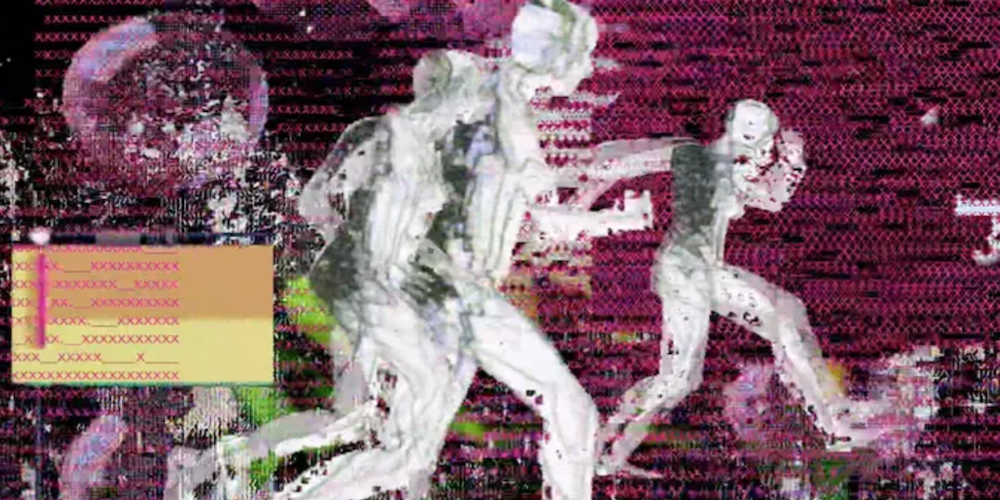Collaborative Futures and Mythical Creatures in Blockchain Fairy Tales

If I was expecting to sit back as a passive audience member and watch a show, I couldn’t have been more wrong. The future of storytelling—as explored in the performance of Blockchain Fairy Tales on February 3, 2022—is interactive, whimsical, and speculative.
A collaboration between Columbia’s Digital Storytelling Lab (DSL) and many co-creators, Blockchain Fairy Tales was presented in two performances at this year’s Slamdance Film Festival. The Columbia DSL, headed by Associate Professor of Professional Practice Lance Weiler, is a media lab dedicated to designing new ways to tell stories, with technology as a creative force.
Participants in Blockchain Fairy Tales went on a team journey through digital space in a unique, live, synergistic story experience. It was disarmingly fun, earnest, and innovative—like a philosophical video game, connecting us with users from around the world. And don’t worry, prospective attendees: you do not need to know what blockchain is to join in.
Blockchain Fairy Tales took place predominantly in the visual collaboration platform Miro. A link dropped in the event’s Zoom chat transported participants to a dark, seemingly vast browser space. Each participant’s cursor was labeled with their name, and dozens of tiny colorful arrows roamed the screen.
The Columbia DSL is working with Miro in a variety of ways, Weiler later said, “To explore not only how it can be used for storytelling, but also how people can come into these visual interfaces and be able to collaborate around different challenges.”
White text on the indigo background encouraged us to “Follow the white trail…” a web of scrawled lines, a path we navigated around to different activities, where we could practice the skills we would need for later in our journey. My personal favorite: the station where you could click and drag parts of different animals to create your own mythical creature: a fox’s tail, spider legs, bird feet, a tiger’s back.
In Zoom, a CGI owl—voiced by one of the cast members—introduced us to the next phase of the project. Speaking as our great great great “descendant,” they invited us to reflect on the future in a “call to action.”
In breakout rooms with other participants, we selected and discussed values that we thought generations should carry into the future: empathy, curiosity, responsibility, honesty, and more.
Each breakout room group embarked in Miro on their own trail of stars to new exercises, led by an ‘Owl’ facilitator from the crew. Climate change and our responsibility to the planet was the underpinning theme of these exercises. They were simple tasks, often involving ‘clearing away’ debris from a clue. The messages we uncovered invited us to discuss prompts and answer questions.
“The world is burning,” one prompt read, “Fruit is cooking on trees. Starfish are boiling in the ocean. Why have your values failed to stop these fires?”
As we dragged away plastic bags, bottles, and buoys, or discussed lessons for the future, I was surprised at how these tasks emphasized teamwork and persistence. Suddenly everything we were doing became a metaphor.
Our group developed fast camaraderie. Some of us were in New York, one in Paris, and one in the Netherlands, and we had never met before, yet we were chatting and joking and helping one another; it was like Call of Duty, but wholesome.
We were tasked with combining our individual animal avatars into a super mythical creature, and I am proud to recall our creation, Geoff the Ultimate Vertebrate. He was a handsome two-headed, four-legged, whale-wolf-leopard-fox, who symbolized teamwork and a pack/pod mentality.
What value would we choose to recommend to our descendents? Our Parisian teammate had the brilliant idea of combining empathy, curiosity, responsibility, and honesty to make ‘Emphonusiobility’—because we would need all our values at our disposal to make a better world. Our Blue Owl leader, very amused, assured us that our responses would be recorded for posterity.
After the event, Weiler and co-creators hosted a virtual Q&A, expanding on the technology used to create the layers of the digital world we had experienced. It was fascinating to hear the developer’s perspective.
“In an ideal world,” Weiler said, discussing attention management, “we would have Zoom just be audio entirely, and you would never touch the interface of it, everything would just be through [the] Miro interface.”
Weiler was especially interested in feedback. “Our work is constantly in motion. What you experienced was a prototype. We’re constantly prototyping. It’s more about the journey than it is the final thing,” Weiler explained. “You’re in the early drafts of what this experience is.”
He encouraged anyone interested in prototyping or collaborating with the Columbia DSL to reach out, or to come to their monthly meetups “for those interested in how to harness story, play, design and technology for social innovation.”